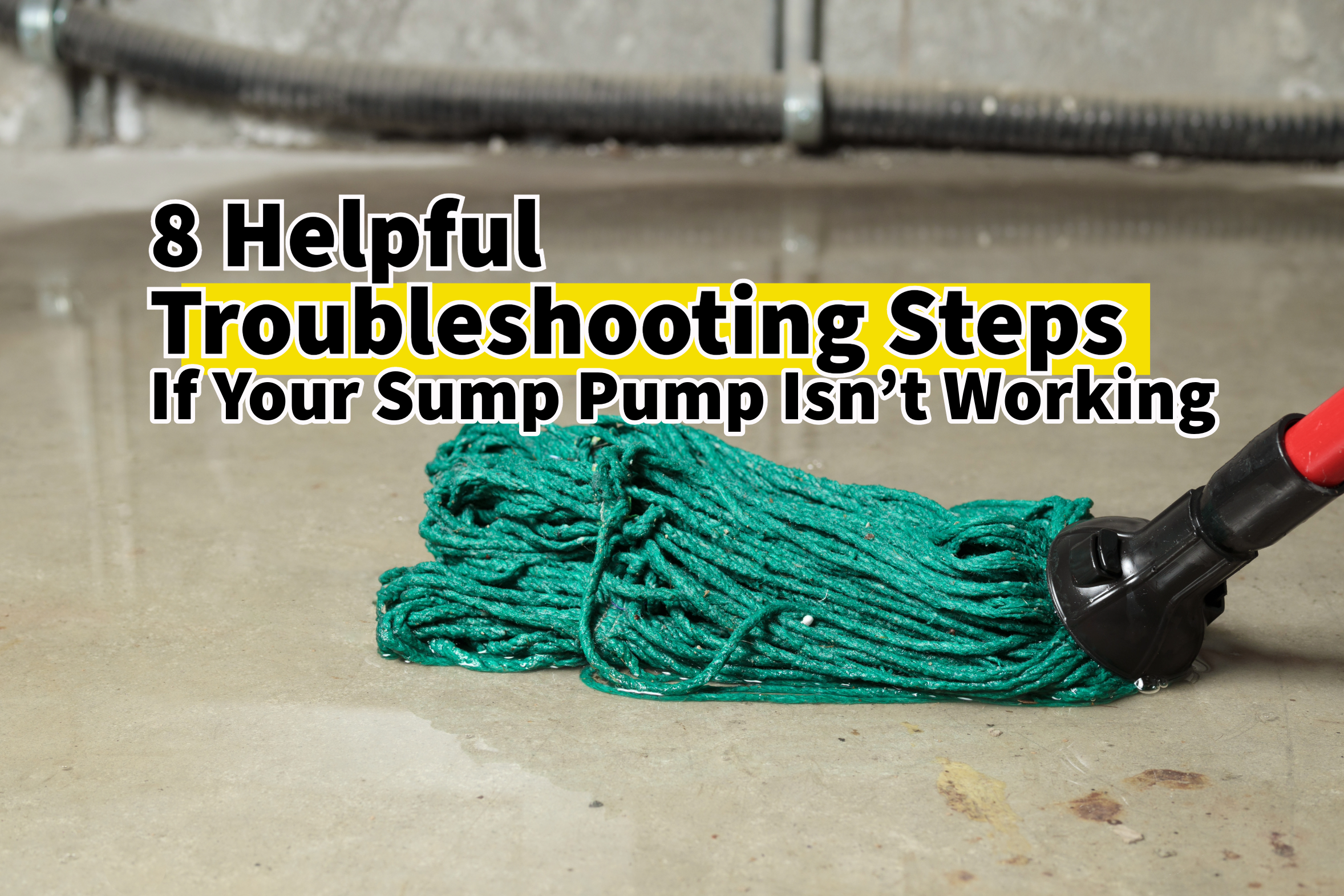Is your sump pump not working? With the recent weather, it’s not uncommon this time of the year. Ohio weather certainly has a way of causing various home issues or problems. With snow melt and rain during the winter, sump pump issues are quite common. When your sump pump stops working, it’s important not to delay.
Sump pumps are designed to pump water out through the discharge pipe and direct it away from your home’s foundation. So, when a sump pump suddenly stops working, it can quickly lead to basement flooding and other issues. Fortunately, your favorite experts at Miamisburg Plumbing & Drain are here to help you troubleshoot and figure out the problem. However, you shouldn’t wait for a problem to arise; familiarize yourself with the eight most common reasons your sump pump may be malfunctioning and how to troubleshoot those issues today.
TROUBLESHOOTING STEPS:
Step 1: Did You Check the Power Supply?
Power outages often cause problems with sump pumps. If your sump pump stops working, start troubleshooting by first confirming if it’s plugged in and receiving power. Then, if that doesn’t work, test the outlet with another device to determine if the outlet is the issue or if the problem lies within the sump pump. You can also try unplugging and plugging back in the pump. Please note that this may only provide a temporary solution.
Step 2: Did You Check the Pump Motor?
What about the pump motor? It is a good idea to listen to any unusual noises coming from the pump motor. However, if you find that the motor is not running, go ahead and check the circuit breaker and reset it if needed.
Step 3: Did You Check the Pump Basin?
Throughout your troubleshooting process, it’s important to inspect the inside of the pump basin, too. Without proper care, the inside of the pump basin is prone to gathering loose debris and particles within it. When this happens, it can cause unnecessary build-up and lead to a clog, which can impede the functionality of the pump’s impeller. So, be sure to add giving the pump pit a quick once over to your troubleshooting steps. If you happen to find anything, take a moment to carefully remove it from the sump pump pit.
Step 4: Did You Check the Float Switch?
Now, it’s time to check on the float switch. Check the float switch for proper movement. Keep an eye out for any debris that needs to be cleared, and ensure that the float switch is able to continue to move around freely. A stuck or frozen float will not activate the pump as intended.
Step 5: Did You Check the Check (or Overflow) Valve?
- Ensure the check valve is installed correctly.
- Check for any debris blocking the valve.
- Also, inspect the pipe above the valve for potential clogs.
- The check valve should prevent water from flowing back into the sump pit if it’s functioning properly.
Step 6: Did You Check the Discharge Pipe?
If your basement is flooded and the water is not being discharged away from your home, there’s a good chance that the discharge pipe is clogged. So, your first task is to find and check the discharge pipe.
Step 7: Did You Check the Weeping Hole?
Make sure to inspect the weeping hole on your sump pump. This small hole on the discharge pipe is meant to release air and ensure proper functioning. If the weeping hole gets blocked, the pump won’t work as intended. If you find a clog in the weeping hole, clear it out to resolve the issue.
Step 8: Did You Check the Size of Your Pump
If your sump pump is too small for your space, it won’t handle be able to keep up with the large volumes of water at certain times. So, if this is an issue that has happened to you repeatedly, it might be time to consider an upgrade in order to avoid this recurring problem.
You can do it! With determination and focused DIY troubleshooting, you should be able to identify the cause of your sump pump problem. Dealing with sump pump issues in cold weather can be challenging, but remember that safety is the top priority. So, please take your time, proceed cautiously, and follow each troubleshooting step carefully as you assess your situation.
CONSULT PROFESSIONAL HELP:

If you’re still confused and can’t figure out what’s happening, don’t worry! Miamisburg Plumbing & Drain is here to help. If you’ve followed the troubleshooting steps and the issue persists, it’s important to reach out to us. Our team of professionals will diagnose the problem and get your sump pump up and running again.
Consider These Helpful Sump Pump Tips:
Before we finish, here are a few valuable tips to help you maintain your sump pump:
To keep it running smoothly, try to make It a habit of checking on it regularly. It’s always a good idea to verify everything is functioning properly and to listen for any unusual sounds every now and then. Moreover, to maintain the proper functioning of your sump pump, keep the area around it clutter-free. Keep in mind that loose debris can cause various problems, such as clogs, that hinder the pump’s functionality. So, be sure that the sump pump pit lid is securely in place and sealed to prevent unwanted particles from entering. A secure lid will help prevent debris from interfering with the pump.
Remember, it’s crucial to have a licensed plumber inspect your sump pump and identify any underlying issues. Your home’s plumbing system is crucial, and it’s important to have someone trustworthy to handle it. At Miamisburg Plumbing & Drain, we prioritize our customers and aim to provide top-quality service. Your safety, comfort, and satisfaction are our main concerns.
For all your plumbing needs, trust Miamisburg Plumbing & Drain. We’ve got you covered! Call us today at (937) 705-0297, or schedule an appointment online now by clicking here!

